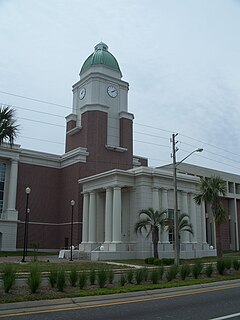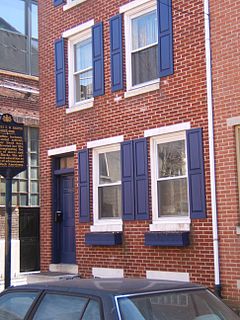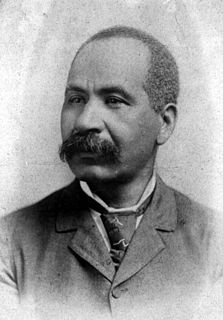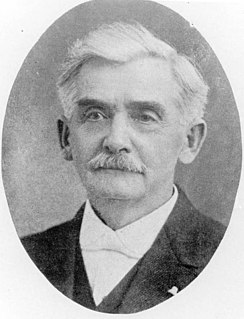Related Research Articles

Clay County is located in the northeastern part of the U.S. state of Florida. As of 2019, the population was 219,252. Its county seat is Green Cove Springs. It is included in the Jacksonville metropolitan statistical area.
Brown v. Board of Education of Topeka, 347 U.S. 483 (1954), was a landmark decision of the U.S. Supreme Court in which the Court ruled that U.S. state laws establishing racial segregation in public schools are unconstitutional, even if the segregated schools are otherwise equal in quality. Handed down on May 17, 1954, the Court's unanimous (9–0) decision stated that "separate educational facilities are inherently unequal", and therefore violate the Equal Protection Clause of the Fourteenth Amendment of the U.S. Constitution. However, the decision's 14 pages did not spell out any sort of method for ending racial segregation in schools, and the Court's second decision in Brown II only ordered states to desegregate "with all deliberate speed".

Alachua County is a county located in the north central portion of the U.S. state of Florida. As of the 2010 census, the population was 247,336. The county seat is Gainesville, the home of the University of Florida since 1906, when the campus opened with 106 students.
The Highlander Research and Education Center, formerly known as the Highlander Folk School, is a social justice leadership training school and cultural center in New Market, Tennessee. Founded in 1932 by activist Myles Horton, educator Don West, and Methodist minister James A. Dombrowski, it was originally located in the community of Summerfield in Grundy County, Tennessee, between Monteagle and Tracy City. It was featured in the 1985 documentary film, You Got to Move. Much of the history was documented in the book Or We'll All Hang Separately: The Highlander Idea by Thomas Bledsoe.

Race-integration busing in the United States was the practice of assigning and transporting students to schools within or outside their local school districts in an effort to diversify the racial make-up of schools. While the 1954 U.S. Supreme Court landmark decision in Brown v. Board of Education declared racial segregation in public schools unconstitutional, many American schools continue to remain largely uni-racial due to housing inequality. In an effort to address the ongoing de facto segregation in schools, the 1971 Supreme Court decision, Swann v. Charlotte-Mecklenburg Board of Education, ruled that the federal courts could use busing as a further integration tool to achieve racial balance.

Segregation academies are private schools in the Southern United States that were founded in the mid-20th century by white parents to avoid having their children attend desegregated public schools. They were founded between 1954, when the U.S. Supreme Court ruled that segregated public schools were unconstitutional, and 1976, when the court ruled similarly about private schools.

Bella Vista, Italian for "beautiful sight", is a neighborhood in the South Philadelphia section of Philadelphia, Pennsylvania.

The McDonogh Three is a nickname for the three African-American girls, who, at the age of six, were the first black students to integrate an all-white school in New Orleans. Leona Tate, Tessie Prevost, and Gail Etienne lived in the 9th Ward of New Orleans, a neighborhood where black and white people lived separately by block. Even though segregated schools had been illegal since the Brown v. Board of Education case in 1954, no states in the American South had taken action to integrate their schools. Leona Tate, Gail Etienne, and Tessie Prevost had all attended the black-only schools in their neighborhood, until November 14, 1960, when they arrived at a previously all-white segregated school called McDonogh No. 19. On the same day, another six-year-old African-American girl named Ruby Bridges integrated a second New Orleans public school called William Frantz Elementary.
Hillsborough County Public Schools (HCPS) is a school district that runs the public school system of Hillsborough County in west central Florida and is headquartered in Tampa, Florida. It is frequently referred to as the School District of Hillsborough County (SDHC).

Racial segregation in the United States is the segregation of facilities, services, and opportunities such as housing, medical care, education, employment, and transportation in the United States along racial lines. The term mainly refers to the legally or socially enforced separation of African Americans from whites, but it is also used with regard to the separation of other ethnic minorities from majority mainstream communities. While mainly referring to the physical separation and provision of separate facilities, it can also refer to other manifestations such as prohibitions against interracial marriage, and the separation of roles within an institution. Notably, in the United States Armed Forces up until 1948, black units were typically separated from white units but were nevertheless still led by white officers.
The history of Tallahassee, like the history of Leon County, begins with the Native American population and its interaction with British and Spanish colonists as well as Anglo-American colonists and Africans escaping colonial slavery, as the Florida Territory moved toward statehood. Growing numbers of cotton plantations increased the settlement's population greatly. It became a city and capital in 1821.
The Noyes Academy was a racially integrated school, which also admitted women, founded by New England abolitionists in 1835 in Canaan, New Hampshire, near Dartmouth College, whose then-abolitionist president, Nathan Lord, was "the only seated New England college president willing to admit black students to his college".
The Ocoee massacre was a white mob attack on African-American residents in northern Ocoee, Florida, which occurred on November 2, 1920, the day of the U.S. presidential election. The town is in Orange County near Orlando. Most estimates total 30–35 Black people killed. Most African American-owned buildings and residences in northern Ocoee were burned to the ground. Other African Americans living in southern Ocoee were later killed or driven out on threat of more violence. Ocoee essentially became an all-white town. The massacre has been described as the "single bloodiest day in modern American political history".

Thomas DeSaille Tucker or Thomas DeSaliere Tucker was an African-born lawyer, educator, and missionary. He was the first president of the State Normal College for Colored Students, which eventually became Florida Agricultural and Mechanical University.

School segregation in the United States has a long history. In 1782, African Americans in Boston, including Prince Hall, campaigned against inequality and discrimination in the city's public schools. They petitioned the state legislature, protesting that their taxes supported the schooling of white students while there was no public school open to their children. In 1835, an anti-abolitionist mob attacked and destroyed Noyes Academy, an integrated school in Canaan, New Hampshire founded by abolitionists in New England. In 1849, the Massachusetts Supreme Court ruled that segregated schools were allowed under the Constitution of Massachusetts.

William Nicholas Sheats was an educator and politician called the "Father of Florida's Public School System." He was state superintendent of public education in Florida from 1893 to 1905, and again from 1913 to 1922.

School integration in the United States is the process of ending race-based segregation within American public and private schools. Racial segregation in schools existed throughout most of American history and remains an issue in contemporary education. During the Civil Rights Movement school integration became a priority, but since then de facto segregation has again become prevalent.
This is a timeline of the 1947 to 1968 civil rights movement in the United States, a nonviolent mid-20th century freedom movement to gain legal equality and the enforcement of constitutional rights for People of Color. The goals of the movement included securing equal protection under the law, ending legally established racial discrimination, and gaining equal access to public facilities, education reform, fair housing, and the ability to vote.
The city of Gainesville, Florida, USA, was incorporated in 1869.

Florida Agriculture & Mechical Hospital (1911-1971) was the first institution in Florida providing medical care to African Americans, who, during the segregation period, were not permitted to receive care at whites-only hospitals. There was no other such institution within 150 miles (240 km) of Tallahassee. In 1940, "less than a dozen" counties in Florida had hospital facilities for Negroes.
References
- ↑ "One man's war on Florida's desegregated schools". redefinED. September 20, 2016.
- 1 2 3 4 Gibbons, Patrick R. (November 16, 2016). "William N. Sheats and pitfalls of democratic control of public education". redefinED.
- ↑ "Historical Marker". The Florida Channel.
- ↑ "School founded in 1891 to finally get proper recognition". Clay Today.
- ↑ "Orange Park school known for desegregation to receive Historical Marker in February". www.firstcoastnews.com.